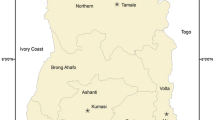Abstract
Good Agricultural Practices (GAPs) includes agricultural techniques which environmentally-conscious, is not harmful to human and animal health, target protection of natural resources, provide traceability and food security. With these kinds of production techniques, it is aimed at agricultural production which is socially viable, economically profitable and sustainable. In this study conducted under good agricultural practices, pesticide residues in apricot fruit were investigated. The experiment was set up to have 3 replications and 15 trees in each replicate, according to randomized trial design. From the trees included in the experiment, necessary samples were taken at the harvest time and analyzes were carried out. In this study, pesticide residue levels were determined in fruit extracts with high-precision analytical instruments such as LC-MS/MS and GC-MS. A total of 385 pesticide active substances were analyzed in LC-MS/MS and 101 pesticide active substances in GC-MS in fruit extracts. In this research carried out in 2014 and 2015, samples of both years were not found to be detectable to the tolerance values of Turkish Food Codex (TFC).
Similar content being viewed by others
References
Abhilash PC, Singh N (2009) Pesticide use and application: an Indian scenario. J Hazard Mater 165(1–3):1–12
Agnihotri NP (1999) Pesticide safety and monitoring, all India coordinated research project on pesticides residues. Indian Council of Agricultural Research, New Delhi
Anonymous (1991) Survey of the environment, the Hindu
Berny P (2007) Pesticides and the intoxication of wild animals. J Vet Pharmacol Ther 30(2):93–100
Durmuşoğlu E, Tiryaki O, Canhilal R (2010) Türkiye’de Pestisit Kullanımı, Kalıntı ve Dayanıklılık Sorunları. VII. Türkiye Ziraat Mühendisliği Teknik Kongresi, TMMOB Ziraat Mühendisleri Odası, Ankara, pp 589–607, 11–15
Ersoy N, Tatlı Ö, Özcan S, Evcil E, Coşkun LŞ, Erdoğan E (2011b) Sert Çekirdekli ve Sert Kabuklu Meyve Türlerinde Bazı Pestisit Kalıntıları. Selçuk Tarım Ve Gıda Bilimleri Dergisi 25(1):75–83
Ersoy N, Tatlı Ö, Özcan S, Evcil E, Coşkun LŞ, Erdoğan E, Keskin G (2011a) Üzüm ve Çilekte Pestisit Kalıntılarının LC-MS/MS ve GC-MS ile Belirlenmesi. Selçuk Tarım Ve Gıda Bilimleri Dergisi 25(2):70–80
Fernandes VC, Domingues VF, de Freitas V, DelerueMatos C, Mateus N (2012) Strawberries from integrated pest management and organic farming: phenolic composition and antioxidant properties. Food Chem 134:1926–1931
Indian Council of Agricultural Research (ICAR) (1967) Report of the Special Committee on Harmful Effects of Pesticides. New Delhi, p 93.
Lehotay SJ (2007) Determination of pesticide residues in foods by acetonitrile extraction and partitioning with magnesium sulfate: collaborative study. J AOAC Int 90(2):485–520
Lopez-Martinez JD, Vazquez-Diaz DA, Esparza-Rivera JR, Garcia-Hernandez JL, Castruita-Segura MA, Preciado-Rangel P (2016) Yield and nutraceutical quality of tomato fruit produced with nutrient solutions prepared using organic materials. Rev Fiton Mex 39(4):409–414
Mutengwe MT, Chidamba L, Korsten L (2016a) Monitoring pesticide residues in fruits and vegetables at two of the biggest fresh produce markets in Africa. J Food Prot 79(11):1938–1945. https://doi.org/10.4315/0362-028X.JFP-16-190
Mutengwe MT, Chidamba L, Korsten L (2016b) Pesticide residue monitoring on South African fresh produce exported over a 6-year period. J Food Prot 79(10):1759–1766. https://doi.org/10.4315/0362-028X.JFP-16-022
Rekha B, Naik SN, Prasad R (2006) Pesticide residue in organic and conventional food-risk analysis. J Chem Health Saf 13:12–19
Yalçın E, Taşlı B, Çiçek F, Demirtaş G, Yapar K, Çavuşoğlu K (2016) Albino Farelerde Dinikanazol Toksisitesine Karşı Üzüm Çekirdeği Özütünün Koruyucu Rolünün Araştırılması. Erciyes Fre J Inst Sci Technol 32(1):54–59
Author information
Authors and Affiliations
Corresponding author
Ethics declarations
Conflict of interest
N. Ersoy, O. Tekinarslan, E.A. Ozgür and U. Göktas declare that they have no competing interests.
Rights and permissions
About this article
Cite this article
Ersoy, N., Tekinarslan, O., Ozgür, E.A. et al. Determination of Pesticide Residues in Apricot (Prunus armeniaca L.) Grown at Good Agricultural Practices (GAPs) by LC-MS/MS and GC-MS. Erwerbs-Obstbau 60, 349–358 (2018). https://doi.org/10.1007/s10341-018-0383-9
Received:
Accepted:
Published:
Issue Date:
DOI: https://doi.org/10.1007/s10341-018-0383-9




